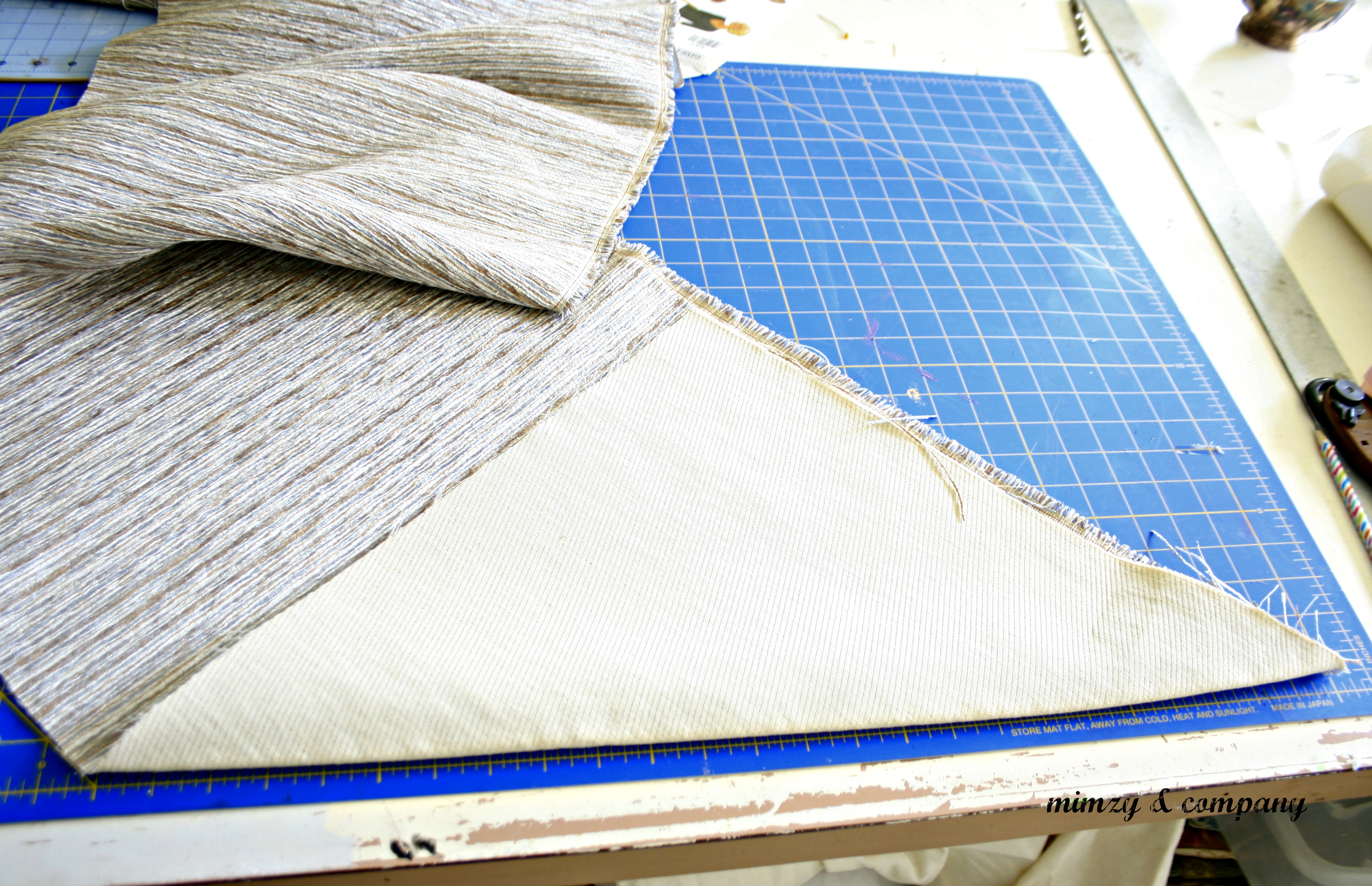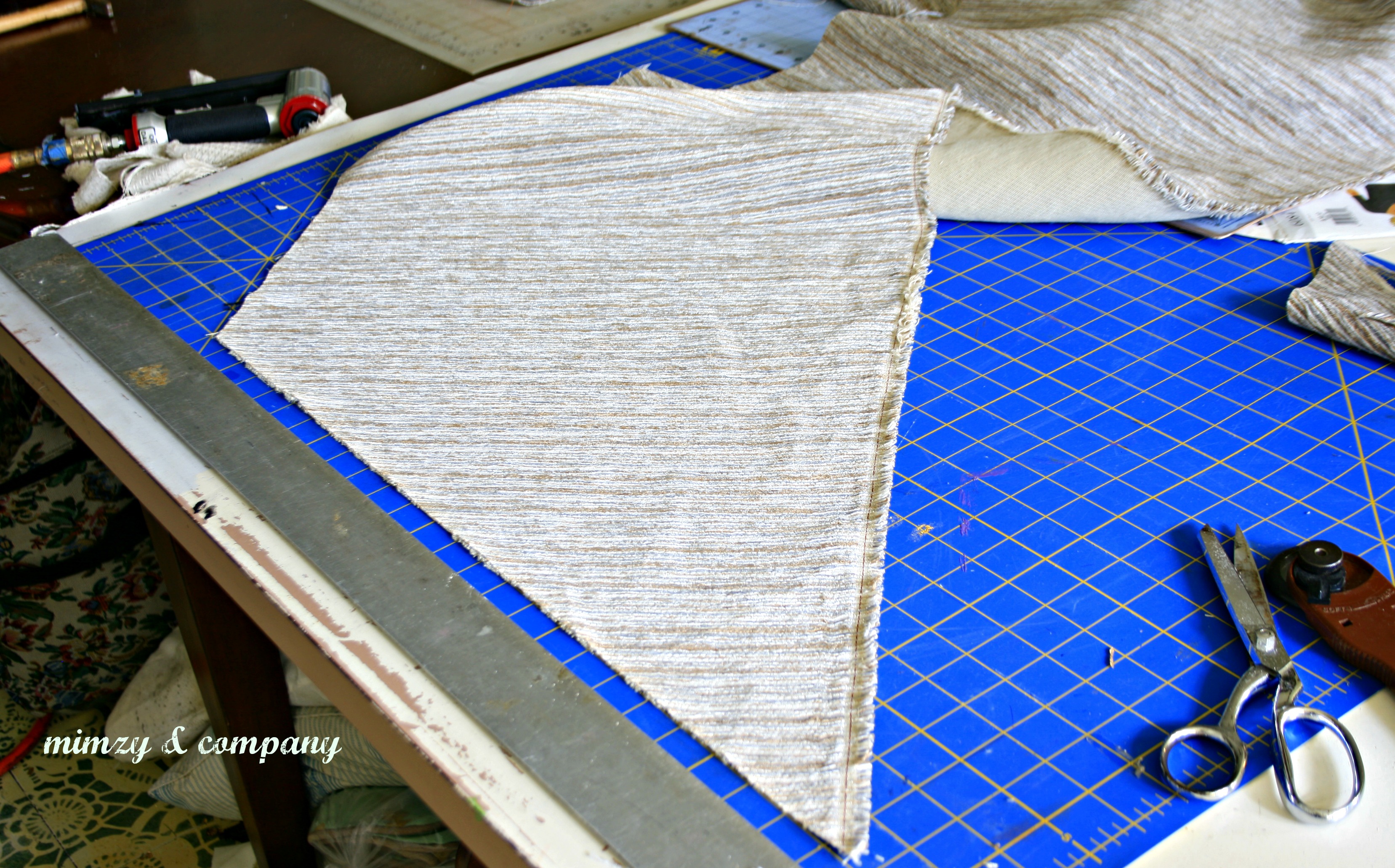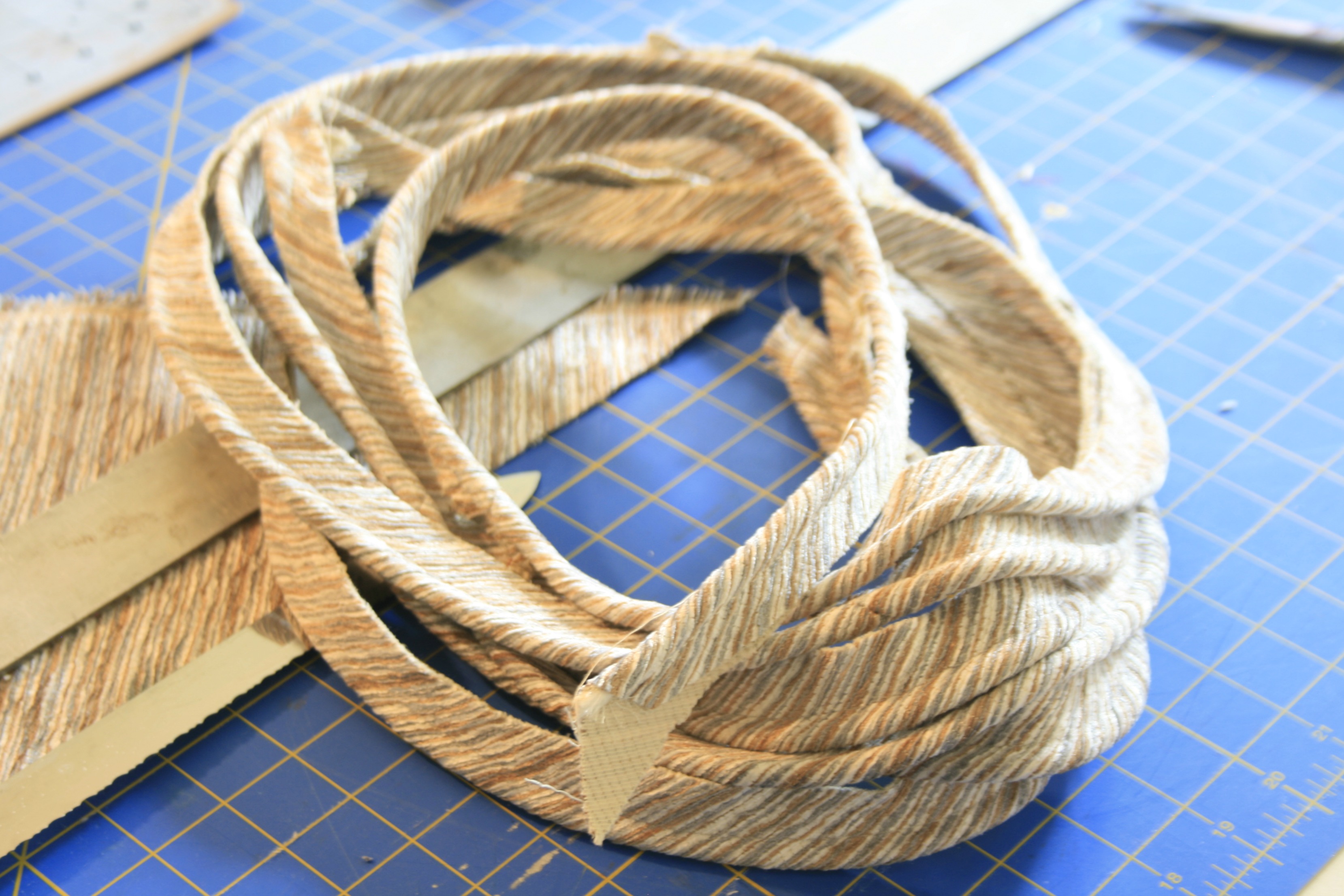 Today I’m working on an upholstered headboard similar to the picture below. Essentially a box…welt in the front and welt in the back(barely visible but against the wall). My client provided a former cabinet door to use as a frame, since it’s the exact width of a king bed.
Today I’m working on an upholstered headboard similar to the picture below. Essentially a box…welt in the front and welt in the back(barely visible but against the wall). My client provided a former cabinet door to use as a frame, since it’s the exact width of a king bed.

This striped headboard is the same box style.

After measuring and cutting the fabric for the body(face) and the banding, I had about 1/2 yard left for the welt(piping). The welt should always be cut on the bias(diagonal grain of the fabric) if possible. This allows the fabricated welt to have the flexibility to go around curves and corners because the bias has stretch. The easiest way to cut fabric on the bias is to fold the cut edge to the selvage edge. The fold is the bias grain of the fabric…meaning 45 degree angle to the straight and cross grain.
 I cut welt strips 2 inches, therefore the first cut, on the fold pictured above will only be 1 inch. Then cut every subsequent strip 2 inches.
I cut welt strips 2 inches, therefore the first cut, on the fold pictured above will only be 1 inch. Then cut every subsequent strip 2 inches.
I use a roller cutter, mat, and a metal ruler to cut my bias strips, but you can certainly use scissors and a fabric pen or chalk.
Notice the cut edge is a 45 degree angle to the selvage edge and the pattern of the fabric.
I need 214 inches to get around the headboard once, so I cut 11 strips because my fabric is about 20 inches wide. Then I proceeded to construct.
I lay the cut bias strips at a 45 degree angle to each other, right sides together as pictured above. Notice the outside corners are hanging over slightly. This will ensure the cut edges will line up after seaming the strips together.
 When making welt with fabric like this it’s especially important to make sure the pattern is running in the same direction. Linen, canvas, solids, and such it doesn’t make much difference, but just a tidbit to keep in mind. I once used velvet and didn’t think to match the weft of the fabric on my welt and my upholstery teacher called me out. On welt! That’s a trained eye!
When making welt with fabric like this it’s especially important to make sure the pattern is running in the same direction. Linen, canvas, solids, and such it doesn’t make much difference, but just a tidbit to keep in mind. I once used velvet and didn’t think to match the weft of the fabric on my welt and my upholstery teacher called me out. On welt! That’s a trained eye!
Stitch together the bias strips and then press open the seams.
 Make sure to use a small stitch so it won’t gap open.
Make sure to use a small stitch so it won’t gap open.
Then sew the cord into the long bias strip you’ve created. I use a zipper foot on my machine. I have and welt foot but prefer to use a zipper foot. Personal preference.
There you have it…enough welt to to make a king headboard.
The finished headboard is up next. Did that make sense? Comment if you need clarification. I’m planning to do some video tutorials in the near future also.





